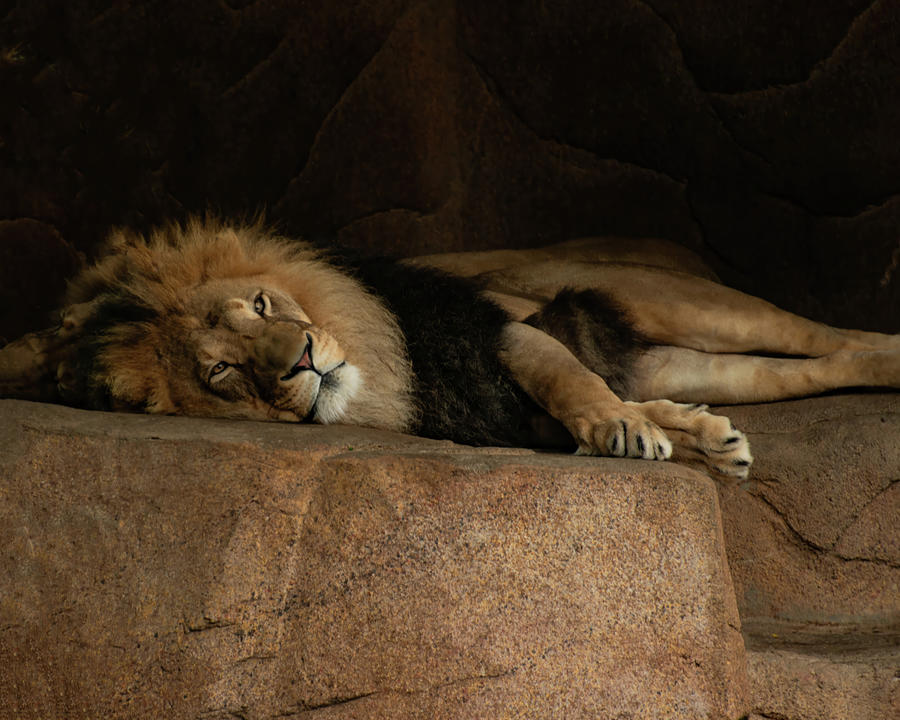
Lion 004

by Flees Photos
Title
Lion 004
Artist
Flees Photos
Medium
Photograph - Home Decor And Giclee Wall Art By Chris Flees
Description
Lions are magnificent big cats known for their strength, social behavior, and distinctive appearance. Here are some important facts about lions:
Scientific Classification: Lions belong to the genus Panthera and the species Panthera leo. They are part of the Felidae family, which includes all big cats.
Geographic Range: Historically, lions were found in various parts of Africa and even into parts of Eurasia, including Europe and Asia. However, their range has significantly decreased, and they are now primarily found in sub-Saharan Africa, with a small population of Asiatic lions in India's Gir Forest.
Physical Characteristics:
Size: Adult male lions are larger than females. They typically weigh between 330 to 550 pounds (150 to 250 kilograms), while females weigh around 260 to 400 pounds (120 to 180 kilograms).
Mane: One of the most distinctive features of male lions is their mane, which varies in color and size. It serves as a display of their strength and health.
Coloration: Lions have a tawny or golden coat with white underparts and various shades of brown. Cubs are born with spots that fade as they grow.
Social Structure: Lions are known for their social behavior and live in groups called prides. A pride typically consists of related females, their offspring, and a few adult males. The females do most of the hunting, while the males protect the territory and the pride.
Reproduction: Lionesses in a pride often synchronize their reproductive cycles, leading to a period of increased cub births. Lionesses give birth to litters of one to six cubs, with an average of two or three cubs per litter.
Hunting and Diet: Lions are carnivorous predators that primarily hunt large mammals such as wildebeest, zebras, and buffalo. They often use group tactics to bring down their prey. Lionesses are the primary hunters in the pride.
Lifespan: In the wild, lions generally have a shorter lifespan due to the challenges they face, such as competition with other predators and disease. They typically live around 10 to 14 years. In captivity, they can live longer, sometimes exceeding 20 years.
Threats: Lions face various threats in the wild, including habitat loss, human-wildlife conflict, poaching, and disease. Their populations have declined significantly in recent decades, and they are classified as vulnerable by the International Union for Conservation of Nature (IUCN).
Conservation Efforts: Several conservation organizations and governments are working to protect lions and their habitats. Conservation efforts include creating protected areas, implementing anti-poaching measures, and promoting coexistence between lions and local communities.
Cultural Significance: Lions have been symbols of strength, courage, and royalty in many cultures throughout history. They are featured prominently in art, literature, and mythology, often as symbols of power and majesty.
Lions are iconic animals with a complex social structure and a vital role in their ecosystems. Conserving their populations is crucial for maintaining the biodiversity of the African savannas and the cultural significance they hold worldwide.
Uploaded
September 1st, 2023
Embed
Share





















































